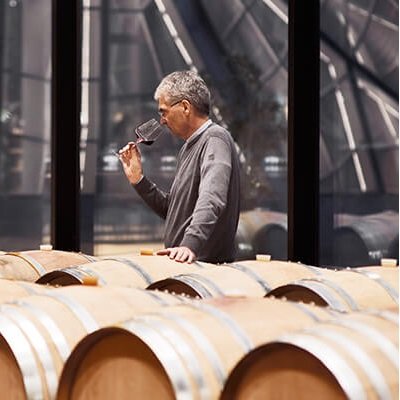There are two new Cuvées Tal le Supertirol from Cantina Bolzano: Tal 1930, white, and Tal 1908, red. Two highly expressive wines that stand at the top of the winery’s range.
Anyone who loves South Tyrolean wines knows the consistent quality of the wines of the Cantina Bolzano – Kellerei Bozen. It is one of the most important production entities, with a respectable history behind it. With its current set-up, it was formed in 2001 by the merger of two key wineries in the Bolzano area: the cellars of Gries (founded in 1908) and St. Magdalena (1930). Keep these dates in mind, we will find them in the two new wines, as a tribute to the winery’s history.

Since 2014, the winery’s Kellermeister oenologist Stephan Filippi, selected the most suitable plots and grapes for the birth of two prestigious cuvées, a white and a red wine, representing T- tradition, A- authenticity, L- longevity, And from this acronym came the name Tal. In German, however, it means “valley,” so the name nevertheless also has territorial significance, reinforced by the importance of the Talvera stream (the syllable Tal- returns), whose ancient floods created the alluvial soil on which the red grape vineyards are planted.
Cuvée Tal, the Supertirols of Cantina Bolzano


To the names of the Tal Cuvées was added the year of the founding of the two original wineries, so we have Tal 1908, red, and Tal 1930, white.
The white cuvée
For the white wine, vineyards around 30 years of age were selected, at an altitude of 400 to 700 meters, up to the famous Renon Plateau. Considerable sunlight and high temperature ranges, combined with the sometimes rushing winds of the Eisack Valley, characterize the microclimate of these vineyards.
A base of Chardonnay, perhaps the most representative variety in the international arena, the variety best suited to the land. It was joined by the Sauvignon, one of the winery’s favorite grapes, whose important aromatics help differentiate Tal from other cuvées. Finally, 10 percent of Pinot Grigio to give balance and add dynamics to expressive power. A blend designed to have flavor breadth with vertical thrust.
Of course, the three varieties have different harvest times and are vinified separately. Chardonnay and Pinot Grigio also undergo malolactic fermentation while Sauvignon does not. Blending is done at the end of fermentation, maturation takes place one year in barrique and is followed by an additional 14 months of aging in steel.
The red cuvée
For the red Tal was intended to enhance the territoriality. The Bolzano winegrowers owe to the Talvera stream mentioned earlier (the one whose first syllable is precisely “Tal”), the type of soil on which they planted their vineyards and which over time has proven extremely suitable not only for Lagrein, but also for Cabernet and Merlot.
The choice fell on vineyards boasting up to 50 years of age, located in the Bolzano basin at about 250 meters, in a sunny position but cooled by the wind from the Sarntal valley. Although Lagrein is an extremely generous grape, its yields have been limited to 70 quintals per hectare. And it is precisely the Lagrein to take the lion’s share, making up 80 percent of the blend, to mark the wine with its strong Alto Adige matrix. The contribution of Cabernet Sauvignon gives structure while the Merlot Adds softness. A red with an international slant but a territorial connotation.
Again, as with the white, the three varieties are vinified separately and combined after alcoholic fermentation. Maturation takes place for one year in barrique followed by further aging in cement.





